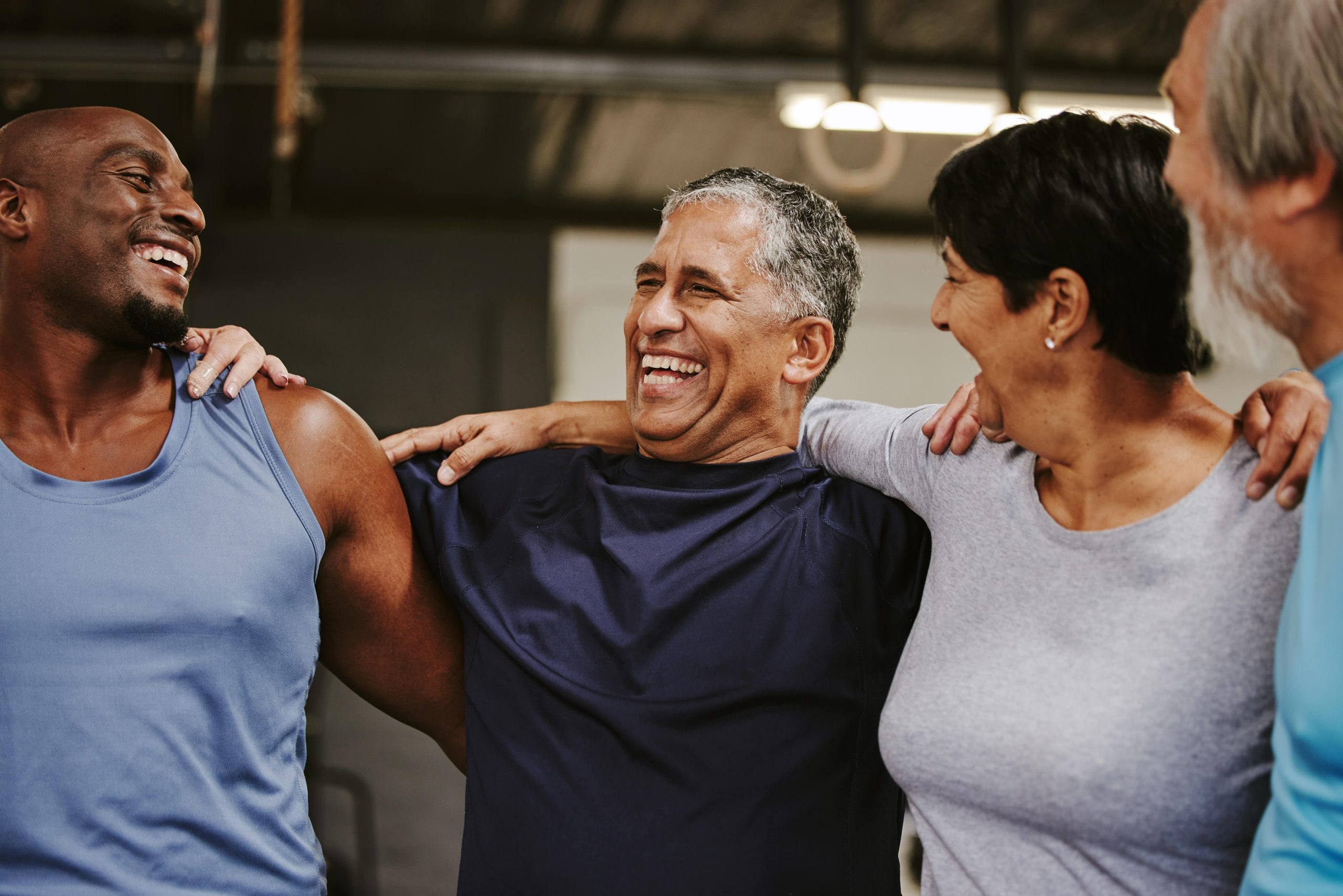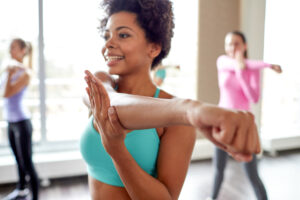Ever laughed so hard that it hurt? That’s because laughter is more than a reaction to humour – it’s physical activity in disguise! Laughter involves repeatedly and forcefully exhaling breath from your lungs. When you chuckle, your heart rate and breathing increase, your diaphragm and abdominal, back, shoulder and facial muscles contract, and you burn calories.
Why many say that “laughter is the best medicine”
You’ve probably heard that “laughter is the best medicine”, but is this true? Not exactly, but laughter (even when it’s fake laughter!) offers many health benefits, just like other forms of physical activity.
Let’s get giggling: The physical and mental health benefits of laughter
Research shows that laughter:
1. Boosts immunity: Studies shows that laughter can help strengthen your immune system by increasing natural killer cell activity, making you less likely to catch a virus.
2. Increases pain tolerance: Like other forms of physical activity, laughter causes levels of endorphins – your body’s natural painkillers – to rise. One study found that people’s pain thresholds increased after watching funny videos.
3. Enhances cardiovascular health: Laughter causes your heart rate to go up and can lower your blood pressure. A study found that people’s blood vessels stayed open (meaning they had reduced blood pressure) for up to an hour after watching a comedy movie scene.
4. Improves sleep: If counting sheep isn’t working for you, have a good giggle before going to bed! One study showed that laughter therapy improved seniors’ sleep quality.
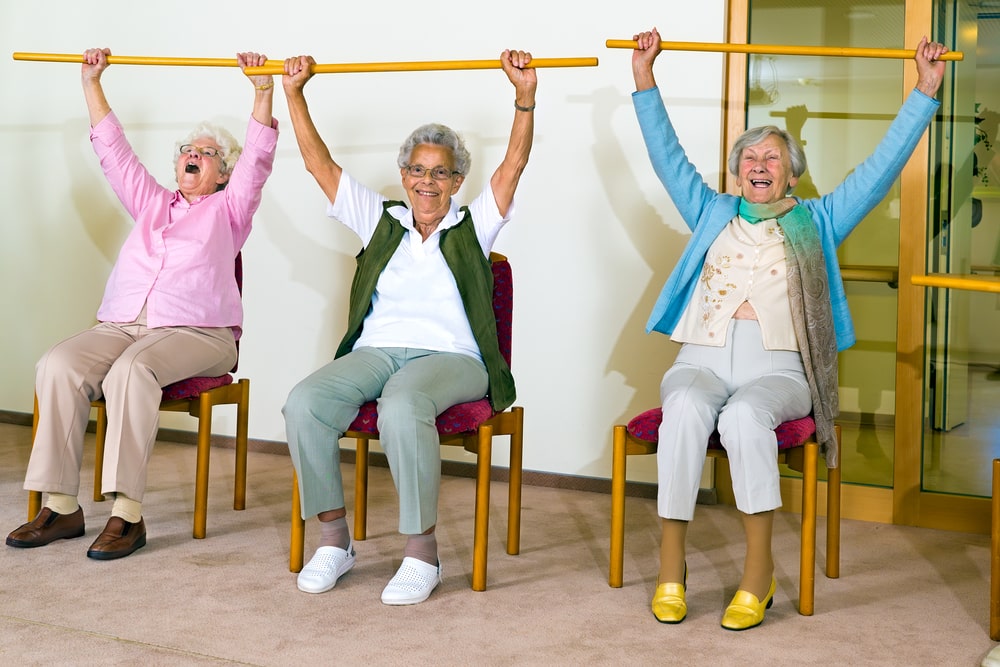
5. Boosts mood by releasing endorphins, dopamine and serotonin – feel-good chemicals that reduce feelings of pain and increase feelings of pleasure, helping you feel less stressed, more relaxed and more positive about yourself and your life.
6. Reduces depressive symptoms. Even simulated laughter can lower rates of depression and boost moods. One study found that older adults with depression who were given laughter yoga therapy had a significant drop in depression scores compared to those who didn’t receive any therapy.
7. Relieves stress by lowering levels of stress hormones like cortisol. In fact, a study found that people who watched a funny video had a significantly larger decrease in cortisol levels than those who watched a neutral one.
8. Enhances social connections: Dread small talk? Tell knock-knock jokes instead! Laughter can help transform you into a social butterfly and just like the synchrony effect experienced when we exercise with others, our endorphin levels and pain thresholds are higher when we laugh together.

Why you should sneak laughter into your exercise routine
While laughter is no substitute for moderate-to-vigorous physical activity (MVPA), it’s great to add before or during a workout session. Not only can chortling make exercise more fun and enjoyable, it can also improve your performance. For instance, the muscle contractions that happen when you laugh help reduce tension, keeping your muscles loose so you can exercise more effectively. Plus, the endorphin rush that laughter triggers can reduce the pain that some forms of exercise (for example, weightlifting) cause. One study also found that when people added playful, simulated laughter into a workout program consisting of balance, strength and flexibility exercises, their aerobic endurance, mental health and exercise motivation all significantly improved.
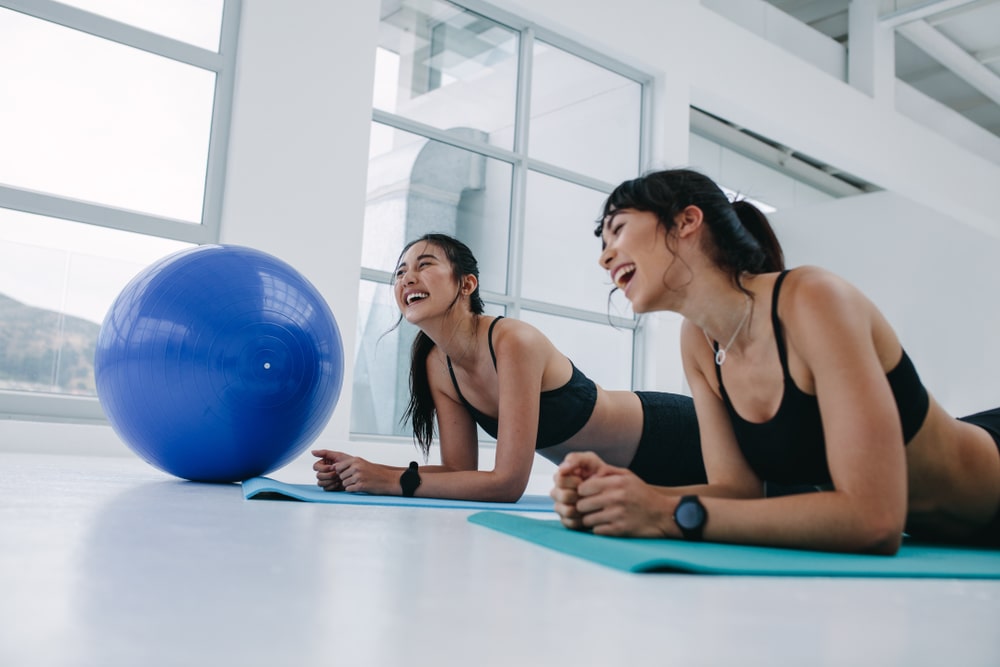
5 ways to spice up your exercise routine with a dash of laughter
Now that you know about the many health benefits of laughter and its ability to change how you exercise, let’s dive into how you can add giggles to your physical activity routine:
1. Try laughter yoga
Invented in 1995 by a doctor in Mumbai, India, laughter yoga combines laughter exercises and yoga breathing techniques. It teaches you how to cackle on cue instead of relying on humour. Classes usually include breathing exercises, clapping, chanting, improv exercises and gentle stretching to help you let loose and laugh. Research shows that laughter yoga could be as effective as aerobic exercise at lowering self-reported stress. Laughter yoga is practiced in more than 5,000 clubs in over 110 countries, including Canada! So, consider joining a laughter yoga class or club near you, search for online videos to follow along with at home or try it with friends or family members.
2. Listen to funny podcasts, audiobooks or songs on the move
Turn your walk, wheel, jog or bike ride into a comedy marathon by listening to humorous content on your smartphone. Caution: may cause sudden giggle fits in public!
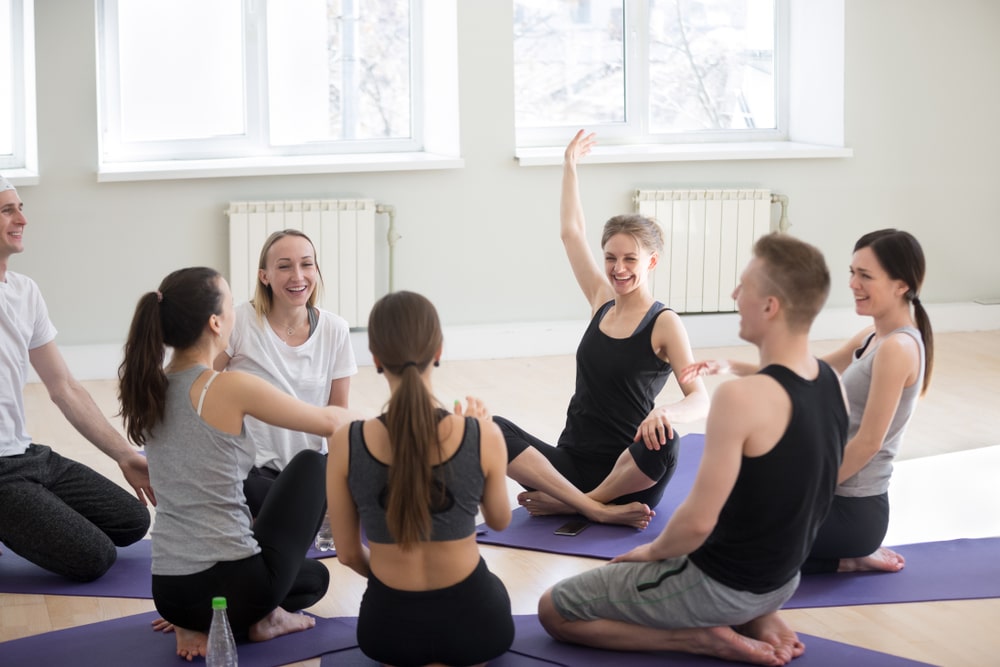
3. Play kids’ games and activities or unusual sports
Adulting is so overrated! Bring out your inner child by playing tag or soccer baseball, competing in three-legged or sack races, doing obstacle courses, tobogganing or building snowpersons. Laughter is almost guaranteed!
4. Exercise while watching humorous content
Watch or stream your favourite sitcoms, comedy movies, stand-up routines or funny videos as you break a sweat.

5. Exchange jokes and funny stories with workout buddies
Try lifting everyone’s spirits before or while lifting weights or doing other physical activities with friends or family. As you’ve seen, it’s no joke that laughter counts as physical activity and delivers many benefits from head to toe. So, it makes sense why people often say that “laughter is the best medicine.” Embrace laughter’s healing power by sneaking it into your day-to-day routine (including when you get active) and laugh your way to a happier and healthier you!

While physical activity can be an essential mental health tool, you should always reach out for additional support and services if needed.


